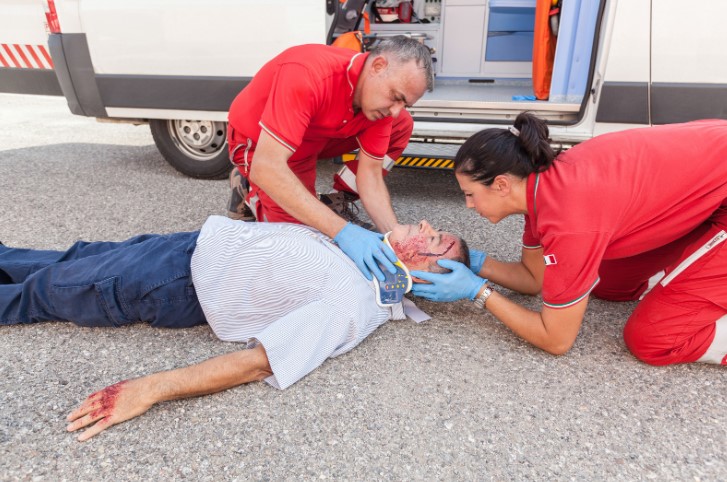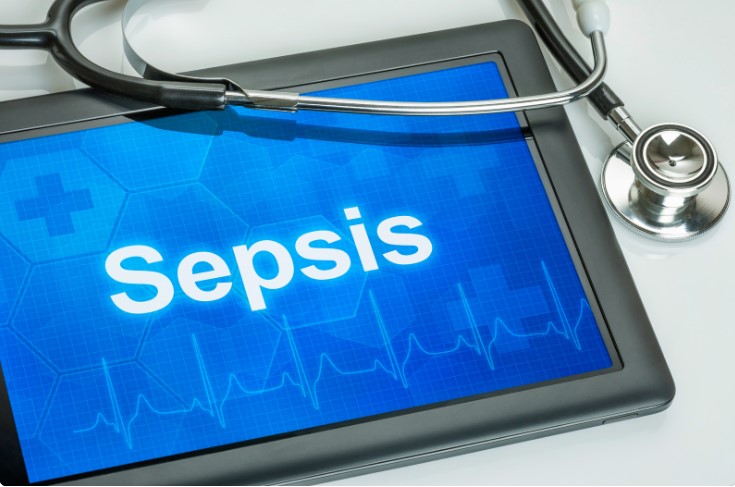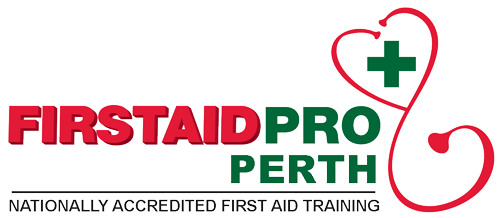Primary and secondary surveys in first aid are important to assess and prioritise a patient’s needs in an emergency situation.
Knowing how to perform these surveys can help you quickly and effectively respond to a medical emergency and potentially save someone’s life.
What Is The Primary Survey?
The primary survey in first aid is a rapid assessment of a patient’s airway, breathing, and circulation. It is performed immediately after a person has become unresponsive or during a medical emergency. The primary survey helps to identify life-threatening conditions and provides a basis for prioritizing medical intervention.
DRS ABC is an acronym used in first aid to remember the key steps in the primary survey. It stands for:
Danger – check the scene for potential hazards such as fire, electricity, chemicals or other hazardous materials. These include checking for any unstable or potentially harmful objects or structures that may pose a risk to both you and others.
Response – check for level of responsiveness by gently shaking the person’s shoulders and asking if they are okay. No response could indicate that they are unconscious and require immediate attention.
Airway – gently tilt the head and lift the chin to ensure that the airway remains open, allowing air to flow freely in and out of the person’s lungs. An obstructed airway can prevent them from breathing normally and can quickly lead to serious complications.
Breathing – check for breathing by looking, listening and feeling for signs of breath for 10 seconds. This involves observing the patient’s chest for any signs of movement, listening for the sound of breathing, and feeling for the flow of air on your cheek.
Circulation – hold the pulse at the carotid artery (neck) or radial artery (wrist) and look for signs of blood flow, such as pulsations, warmth, and skin colour. If the person does not have a pulse, prepare to begin CPR.
Following the DRS ABC steps allow first responders to quickly assess the patient’s condition and determine if immediate action is necessary to save their life.
When Should The Primary Survey Be Used?
The primary survey should be used whenever a person is unconscious or in a medical emergency. This includes cardiac arrest, sudden unconsciousness, choking, severe injury, or suspected life-threatening conditions.
The primary survey is the first step in providing effective first aid and should be performed as soon as possible after the person has become unresponsive or in an emergency. Time is of the essence in these scenarios, and the prompt and efficient completion of the primary survey can save someone’s life.
What Is Secondary Survey?
The secondary survey is a more comprehensive evaluation of the patient’s injuries and illnesses. It is performed after the patient’s airway, breathing, and circulation has been stabilised during the primary survey.
The secondary survey consists of two parts – head to toe physical assessment, and the verbal component is basic medical questioning.
Here is how these are done:
Head-To-Toe Assessment
The head-to-toe assessment begins at the top of the patient’s head and proceeds systematically down their body, examining each body part and system for signs of injury or illness. This may include checking for:
-
- Head injuries (skull fractures or concussions)
- Neck injuries (spinal injuries or dislocated joints)
- Chest injuries (rib fractures or collapsed lung)
- Abdominal injuries (internal bleeding or perforated organs)
- Limb injuries (fractures or dislocations)
- Vital signs (blood pressure, pulse, and breathing rate)
- Skin integrity (cuts, bruises, or burns)
The head-to-toe assessment is a crucial step in secondary survey in first aid, as it helps to identify any other potential threats to the patient’s health and well-being.
By conducting a thorough and systematic evaluation, first responders can ensure that all injuries or illnesses are identified and treated appropriately.
History Taking
The verbal component of history taking in the secondary survey refers to the process of gathering information about the patient’s medical history, symptoms, and the events leading up to the current emergency.
This information can help the first responder to better understand the patient’s condition and make more informed decisions in providing care.
The verbal component of history taking may involve asking the patient or bystanders about:
-
- The patient’s medical history (including any chronic conditions, allergies, or current medications)
- The events leading up to the emergency, such as how the injury or illness occurred
- The patient’s symptoms, including any pain, shortness of breath, or weakness
- Any pre-existing conditions (such as pregnancy or previous surgeries)
The information gathered during the verbal history-taking component can be critical in helping first responders determine the best course of action for treating the patient.
This information can also be valuable in communicating with other healthcare providers, such as paramedics or emergency room physicians, who will continue to care for the patient.
Learn First Aid Today
In conclusion, knowing how to perform a primary survey and secondary assessment can mean the difference between life and death in an emergency. Whether you are a caregiver, parent, or just someone who wants to learn lifesaving skills, a first aid course can give you the knowledge and confidence to act quickly and effectively in an emergency.
First aid courses are readily available, and many organisations offer courses that can be completed online or in person. With comprehensive training and hands-on practice, you can gain the skills and knowledge you need to respond effectively in an emergency.
So don’t wait – take a first aid course today with First Aid Course Canberra and become prepared to save a life!







